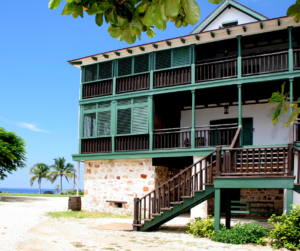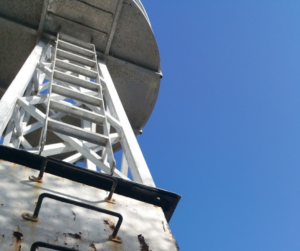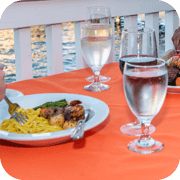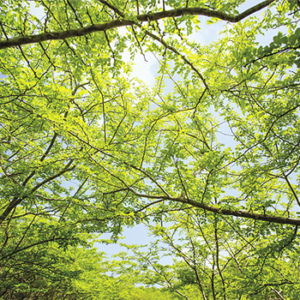Top 5 Cayman Heritage Sites You Have to See
April 18
Written By Morritt's

Top 5 Cayman Heritage Sites You Have to See
For such small islands, we really do pack a punch when it comes to our culture and heritage! The Cayman Islands holds a rich tapestry of historical events, and there are many places you can go to experience this history first hand.
It is no surprise then, that with National Heritage Day this month, we simply had to mention a few of our favourite local heritage sites and places of interest. They are definitely worth a visit, even if you’ve already been.
1. Pedro St. James

Known simply as Pedro Castle to most locals, this great house and its grounds date all the way back to the 18th century. Built by slaves, Pedro St. James was originally owned by an Englishman named William Eden, with the surrounding grounds serving as a plantation. No other structure like this existed in Cayman at the time, and we are certain it must have been quite a sight to behold.
It is no surprise then that Pedro St. James became a key meeting place for principal inhabitants and subsequently, has seen a number of historical events occur within its walls. Most famously, it was the venue for an 1831 meeting where Cayman decided it would form its own elected parliament. Just a few years later, in 1835, court was held at Pedro St. James to issue a proclamation that would end slavery in the British Empire.
Today, Pedro St. James is open for visitors. You are welcome to explore the house and grounds on your own, or have a guided tour (which is very much recommended!). Don’t forget to check out the immersive theatre, which tells the story of the islands and how this beautiful home came to be.
2. Miss Lassie’s House

The quaint seaside cottage with blue and white shutters is a familiar site for anyone who has driven down South Sound. Affectionately known today as Miss Lassie’s house, it was built in 1881 by the father and grandfather of Gladwyn K “Lassie” Bush.
In the early 1900s, the house became a rest stop for residents travelling from the Eastern districts into George Town for trading. With no cars on the island, this was often a day-long journey by foot or donkey, so travellers were grateful for the hammocks and cool breeze coming in from the ocean. Here they could rest for a while before continuing on.
Miss Lassie was born in 1914, and she shared the house with her mother, father and eleven older siblings. At the age of 62 she began painting after what she described as a visionary experience. Through her work, Miss Lassie transformed the house into a living piece of art. Walls, windows and furnishings were decorated with her themed paintings, often depicting biblical or historic scenes.
Since her death in 2003, her home has been protected by the Cayman government and was added to the World Monument Fund’s 2012 Watch List, sharing the company of amazing international sites such as the Great Wall of China, Taj Mahal and Valley of the Kings.
3. Watlers Cemetary

The Watler family cemetery dates way back to the early 19th century, but the cemetery is believed to have been in use well before this. During this time, it was custom for families to set aside a portion of their family land for a graveyard, rather than burying their loved ones in big public cemeteries like we do today.
At the time beach land was considered worthless. Crops could not be grown in the sand, and beach areas posed a risk of storm and flood damage. This is why you will see so many beachside graveyards in Cayman. The sand was also much easier to dig through than the inland island rock.
What makes the graves at old burial sites like Watlers Cemetery unique, is the style of the markers placed on top of some of the older graves. Shaped like long houses, these unusual markers protect the casket from storms. Each ‘house’ bears a small mahogany panel with an inscription of the name of the deceased. Though the stone markers have survived the centuries, unfortunately many of the wooden panels with their inscriptions have faded or completely eroded away.
You will see these house-shaped grave markers in other older Cayman cemeteries, and they are also found in medieval English and Welsh graveyards. In other parts of the Caribbean, you can also find similar markers that date back to the early 1600s.
Old cemeteries like Watlers Cemetery are special because they offer insight on past social customs and events. They are an irreplaceable historical resource and an important record of Cayman’s social history.
4. East End Lighthouse Park

Lighthouses have long served as trusty navigational aids for voyaging ships. In the late 1800s, East End was given an official port of entry for local boats going on fishing and turtling trips, as well as incoming and outgoing freight and mail ships. As a result, Grand Cayman’s first lighthouse was erected in East End on Gorling Bluff. It was the highest point in the district, and offered a clear view out onto the reef. This lighthouse was simply a ship’s mast with a kerosene lamp at the top. 18 years later, a much sturdier structure was built nearby. This lighthouse was also kerosene powered, with two lighthouse attendants appointed to maintain it.
The lighthouse remained in service until 1937, when the British Government required all three islands to be equipped with more modern navigational lights. The new lights were automatic gas controlled, so they could be left unattended for up to six months, and thus, the job of lighthouse keepers ceased to exist.
Now, the lighthouse is still in operation, although the current light is solar powered. Both the older lighthouse and the newer lighthouse can be visited.
5. Fort George

Piracy was dwindling by the end of the 1700s, but there was still plenty of lawless activity on the seas. At the time Grand Cayman was experiencing attacks from Spanish invaders, and so Fort George was built in 1790.
Made from coral and limestone, its design was based on British forts of the time, with an oval base, cannons, and five-foot thick walls on the sea-facing side.
During World War II, Fort George was used by the members of the Home Guard. Their barracks were located next to the fort, and they used a tree growing within the walls as a lookout post. There they would watch closely for German submarines, which often patrolled Caribbean waters in search for English-bound merchant ships. A US Naval base was also set up near Fort George behind the George Town Library.
Today very little remains of Fort George’s original structure. In 1972, a local businessman was frustrated that he was unable to develop the land Fort George stood on. When he eventually took matters into his own hands by demolishing sections of the fort, he was stopped by concerned citizens and further damage was prevented.
The fort’s remains were donated to the National Trust in 1987. Some of the ruins can still be seen, as well as a replica lookout house that would have been used all those years ago. It is worth a visit if you find yourself in the George Town harbour area and fancy learning a few thrilling stories of past invasions and citizens banding together to protect their little island.
























